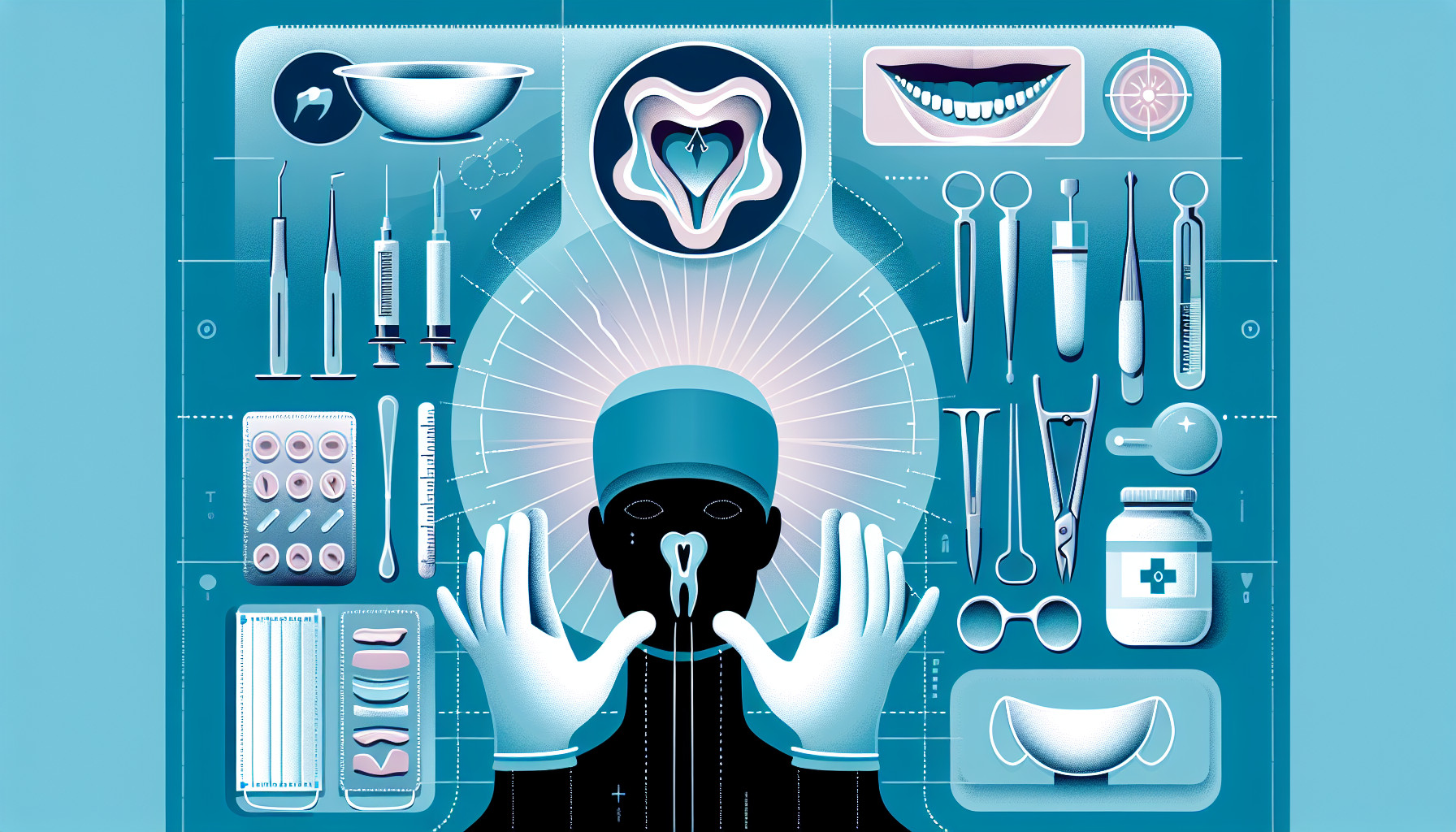Our Summary
This research aimed to examine the spread of potentially contaminated droplets (splatters) during dental procedures, specifically tooth extractions. The study compared the amount of splatter during surgeries using traditional assistant-based tools and self-irrigating drills, and between two types of liquid used during the procedure - saline and hydrogen peroxide.
To track the splatters, a fluorescent solution was used in the drill’s irrigation system. The procedure was performed on manikins with artificial teeth, and filter papers were placed around the setup to capture the splatter.
The results showed the most splatter ended up on the patient’s chest and the assistant’s face shield. Procedures using hydrogen peroxide produced more splatter than those using saline. However, the type of irrigation (assistant-based or self-irrigating drills) made no difference to the amount of splatter.
The study concludes that regardless of the type of tool or liquid used, dental procedures can create splatters that could spread infections. Therefore, it’s crucial to clean and disinfect the areas that these splatters reach. This is especially relevant considering the potential spread of airborne diseases like COVID-19.
FAQs
- What was the aim of this research on oral surgery?
- Did the type of liquid used during the procedure affect the amount of splatter produced?
- What conclusion did the study arrive at regarding the spread of infections during dental procedures?
Doctor’s Tip
One helpful tip a doctor might give a patient about oral surgery is to make sure to follow all post-operative care instructions provided by the oral surgeon. This may include things like taking prescribed medications, avoiding certain foods or activities, and keeping the surgical site clean. By following these instructions, patients can help promote proper healing and reduce the risk of complications.
Suitable For
Patients who may be recommended for oral surgery include those with impacted teeth, severe tooth decay, gum disease, jaw misalignment, facial trauma, or who require dental implants. Oral surgery may also be recommended for patients who need to have a biopsy performed on suspicious lesions in the mouth or who require treatment for conditions such as sleep apnea or temporomandibular joint (TMJ) disorders. Additionally, patients who need to have cysts or tumors removed from the mouth or who require corrective jaw surgery may also be candidates for oral surgery.
Timeline
In summary, before oral surgery, a patient typically undergoes a consultation with the oral surgeon to discuss the procedure, anesthesia options, and any pre-operative instructions. On the day of the surgery, the patient is prepped for the procedure, which may include taking vital signs, administering anesthesia, and positioning the patient in the dental chair.
During the surgery, the oral surgeon performs the necessary procedures, such as tooth extraction, implant placement, or gum surgery. The patient may experience sensations of pressure, pulling, and vibration during the surgery, but should not feel pain due to the anesthesia.
After the surgery, the patient may experience some discomfort, swelling, and bleeding, which can be managed with pain medication, ice packs, and proper oral hygiene. The patient is typically advised to follow post-operative instructions, such as avoiding certain foods, practicing good oral hygiene, and attending follow-up appointments with the oral surgeon.
Overall, oral surgery involves a series of steps before, during, and after the procedure to ensure the patient’s comfort, safety, and successful recovery.
What to Ask Your Doctor
Some questions a patient should ask their doctor about oral surgery, based on this research, could include:
- What measures are in place to prevent the spread of potentially contaminated droplets during my oral surgery procedure?
- Are self-irrigating drills used during tooth extractions, and if so, how do they compare to traditional assistant-based tools in terms of reducing splatter?
- What type of liquid is used for irrigation during dental procedures - saline or hydrogen peroxide? And how does this choice affect the amount of splatter produced?
- How are the areas where splatter lands (such as the patient’s chest and the assistant’s face shield) cleaned and disinfected to prevent the spread of infections?
- In light of the potential spread of airborne diseases like COVID-19, what additional precautions are being taken to ensure a safe and sterile environment during oral surgery procedures?
Reference
Authors: Johnson A, Huang B, Galina IC, Ngo A, Uppgaard R. Journal: Clin Oral Investig. 2023 Nov;27(11):6607-6612. doi: 10.1007/s00784-023-05266-x. Epub 2023 Sep 28. PMID: 37770667
